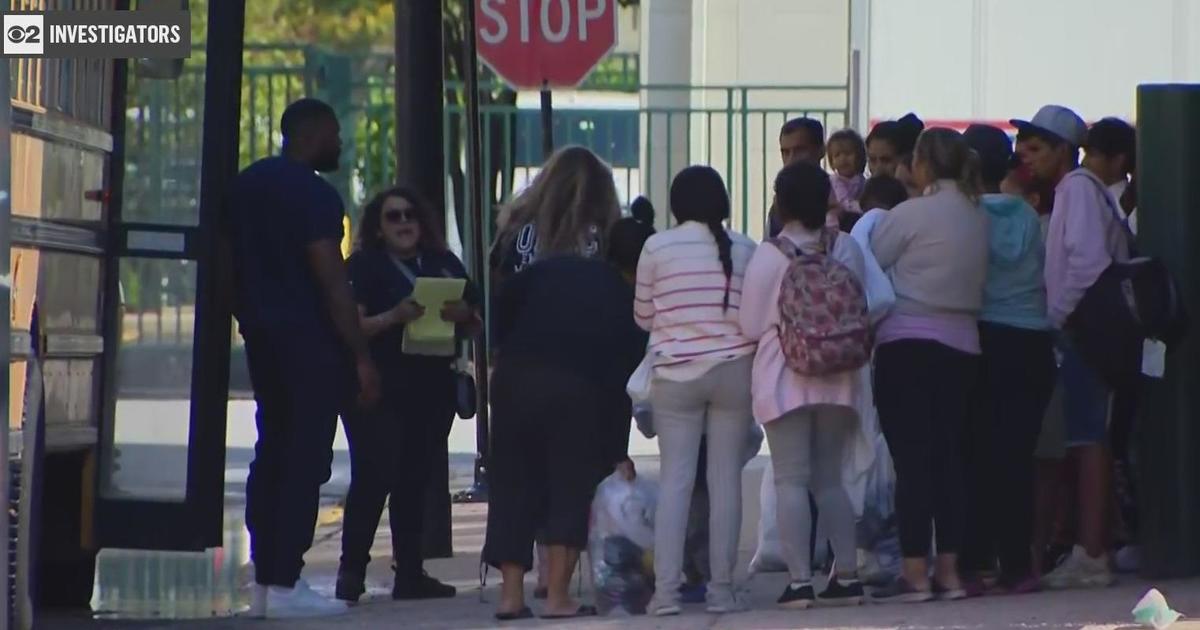MAP: Where Are COVID-19 Deaths Happening? In Chicago, Most Are In Majority-Black Neighborhoods
By Samah Assad, Dorothy Tucker, Carol Thompson
CHICAGO (CBS) — The racial disparities are immediate when you look at the data: black people are dying from coronavirus at a higher rate than any other population in Chicago. While Chicago's black population is 30 percent, the percent of black deaths is nearly 60 percent.
"Those numbers take your breath away," Mayor Lori Lightfoot said two weeks ago. "This is a call to action moment for all of us."
CBS 2 wanted to drill down in the data even deeper to learn more about where the majority of people are dying and how resources can be better allocated there to curb deaths.
Maureen Benjamins, a senior research fellow at Chicago's Mt. Sinai Hospital, told CBS 2 this week it's critical to look at the big picture when honing in on the factors that contribute to glaring racial disparities in Chicago and across the country.
"It's not individual health choices or behaviors," Benjamins said. "It's these structural factors in society that go back to racist policies and discrimination."
These structural factors include poor housing, increased pollution and distance from food and medical services in what are known as "food deserts," Benjamins said. They can also drive increased rates of diabetes and hypertension in black adults — the two most common secondary causes of death in Chicago's coronavirus-related fatalities, according to data analyzed by CBS 2.
So we mapped every death by the neighborhood it happened in, using data released by the Cook County Medical Examiner's office, as well as Census and U.S. Department of Labor data using the mapping software ArcGIS. We found neighborhoods with majority black populations are experiencing the most deaths.
Chicago COVID-19 deaths by neighborhood
You can explore black population percentages, coronavirus deaths, median income and median age across neighborhoods in the map below by zooming in and clicking on each point or neighborhood. Click the arrow at the bottom of the map to switch to a new map. You can also click the button at the top for more information about each map.
As of April 6, there were more than 100 black deaths. As of April 17, 267 African Americans in Chicago died. The number more than doubled.
When our team first mapped the data on April 6, we immediately noticed the five neighborhoods with the most deaths. African Americans make up nearly 88 percent or more of the population in each of these neighborhoods:
- South Shore: Population is 52,408. There were 7 deaths.
- Englewood: Population is 61,010. There were 6 deaths.
- Auburn Gresham: Population is 47,828. There were 6 deaths.
- Chatham: Population is 29,974. There were 5 deaths.
- Austin: Population is 87,695. There were 5 deaths.
We updated our maps on April 17 and found total deaths in each of these neighborhoods increased:
- South Shore: 22 deaths
- Englewood: 23 deaths
- Auburn Gresham: 17 deaths
- Chatham: 12 deaths
- Austin: 19 deaths
Larry Harris spent most of his life in the Austin neighborhood and is one of the more than 260 African Americans in Chicago who died of coronavirus. More than 400 total people have died in the city.
The 62-year-old died last week after testing positive. His nephew, Robert Perkins, said his uncle also had a heart condition.
"It was just terrible," Perkins said. "He was my favorite uncle. I always looked up to him."
Zaher Sahloul, a doctor who runs the intensive care unit at St. Anthony Hospital, said while systemic factors like access to healthy foods and inadequate housing contribute to disparities, another major factor is health care.
"African Americans have poor access to health care, quality health care, compared to other populations," Sahloul said.
We noticed other neighborhoods started to see additional deaths over time too. One example is West Pullman, where 92 percent of residents are black. As of April 6, one death was reported there. Just over a week later, 9 more people died.
Analyzing deaths & median income across neighborhoods
We also analyzed median income levels across neighborhoods with the most deaths. The median income for some of the neighborhoods we reviewed are among the lowest in the city.
For example, Englewood saw the most coronavirus deaths is also the second poorest neighborhood in Chicago, with a median income of $24,000.
Analyzing deaths & median age across neighborhoods
According to health officials, older populations and those with pre-existing conditions are more vulnerable to the coronavirus nationwide. We found that's true in Chicago so far. Those who died were often older than the median age of the their respective neighborhoods.
South Shore, which has seen the second-most deaths so far, has a median age of 39. However, almost every person from that neighborhood who died were older (with the exception of one person in their 20s). Ages ranged from 41 to 90 years old.
Of the five neighborhoods with majority black populations, Englewood had the lowest median age of 33. Every person who died was older than that. Ages ranged from 47 to 79.
In Chatham, where 12 people died, the median age is 43. The youngest person who died was 47 and the oldest was 87.
Austin, where Larry Harris lived, has a median age of 35. Harris was 62 when he died.
"What am I going to miss most about him?" his nephew Robert Perkins said. "Happy times. No big arguments. Family tradition. I'm going to miss him."
Analyzing jobs across neighborhoods
Our data analysis also found in the neighborhoods where the victims lived, many residents are unable to work from home because they have essential jobs that would increase their chances of being exposed to the deadly virus.
"When we consider the types of positions that black Americans hold, many of them are on the front lines in essential roles related to food delivery, groceries work, transportation," said Mercedes Carnethon, an epidemiologist with Northwestern Medicine.
This is true for many of the neighborhoods we found were hardest hit by deaths.
In Englewood, nearly 12 percent of those employed -- or just over 2,000 people -- work transportation jobs. Another 1,200 people work in food preparation.
In Austin, nearly 11 percent of those employed work in transportation as well. That's nearly 3,500 people.
"Consider the case of a young adult working...a grocery store worker. He or she does not have symptoms but they're talking, they are providing care for younger children, they are providing care for elders," Carnethon said. "There is no amount of cleaning within a household that can stop the spread through ordinary interactions and discussions."
CBS 2 will be regularly updating this information with the latest statistics.



